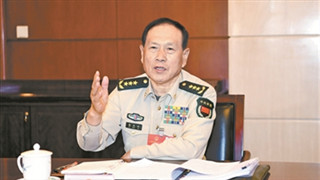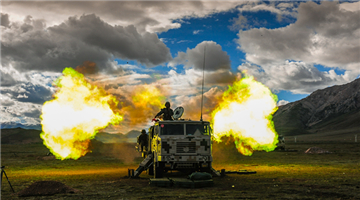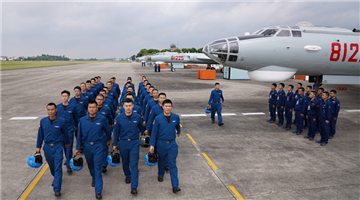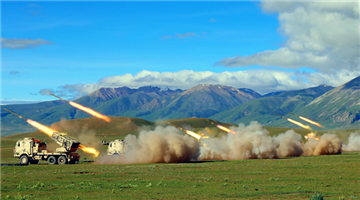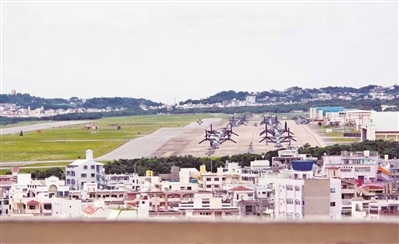
By Zheng He
The US military has witnessed frequent internal accidents and continuous negative news since the beginning of this year. Despite this, it has been frequently engaged in activities in the South China Sea and Taiwan Strait in recent times. It seems to be a high-profile display of strength, but in fact, it indicates the contradictory behavior of the US military, that is, stirring up trouble when it is already problematic, continuously marching forward when it is already weak.
The US military has long-standing problems in military training and personnel management, which have affected the level of its combat readiness. For example, the duty rate is overloaded. After the Cold War, many US aircraft carriers had an overdue duty. The duty time in a year could be up to eight or nine months, exceeding the official duty of no more than six months per year, and the crew is often exhausted both physically and mentally.
Another example is the worrying style of the troops. According to a report by The Hill on July 2, the female soldier at the Fort Hood base of the US military who went missing in April this year was brutally killed by her superior. According to the Russian Sputnik, a shooting incident occurred at Herbert Field Air Force Base in Florida on July 24, causing one death and one injury. In recent years, incidents of collective drug use in the US military have repeatedly occurred.
Another example is the frequent occurrence of some unexpected accidents. According to a report on the US Defense Blog website, an M1A2 Abrams main battle tank of the US Army accidentally shot a friendly tank during training, injuring a crew member. A fire broke out at the US Kadena Air Base in Okinawa on June 22. Japanese media suspected that the move was intentional by the US military and was related to Japan's desire to restart investigations into the carcinogenic issue of biological pollution at the base.
If loose management and lax discipline are the old problems of the US military, then the spread of the COVID-19 pandemic has undoubtedly made it worse. Since the outbreak of the pandemic, the US Navy has been very eye-catching. About a quarter of the crew of the USS Theodore Roosevelt nuclear-powered aircraft carrier was infected, and they were forced to quarantine in Guam for more than two months. After the ship just recovered from severe illness, they were anxious to go to sea for training, and then an F/A-18F Super Hornet fighter jet lost control and fell into the sea.
The Wasp-class amphibious assault ship Goodman Richard was nearly scrapped due to multiple days of fire. The repair work of the USS Kearsarge amphibious assault ship was also interrupted by the fire. Fires also broke out in the second ship of Ford-class aircraft carrier USS John F. Kennedy under construction. Such fires have had a significant impact on the forward deployment plan of the US Navy.
Compared with the Navy, the US Air Force's performance during the pandemic was not much better. The US Futenma Base and Camp Hansen in Japan, and the US Al-Jaber Air Force Base in Kuwait have become blind spots in the fight against the pandemic. US soldiers lack discipline and there are many problems in the barracks. In the past two months, the F-35 and F-22 fighter jets, C-130 transport aircraft, F-15, and F-16 fighter jets of the US Air Force have experienced accidents successively. In the short term, the main battleships and fighters have been continuously damaged, and the current level of the US military's combat readiness has been questioned.
Faced with the dual tests of the decline in combat readiness and the spread of the pandemic, the US military has recognized that to showcase the muscle while it is sick is far more important than to cure the disease. In recent times, the US military has frequently made waves in the waters surrounding China. Since July, two dual aircraft carriers have been dispatched to conduct exercises in the waters surrounding China. As of July 28, US military planes have arrived in the South China Sea for reconnaissance for 12 consecutive days. The US military dispatched 67 sorties of large reconnaissance aircraft to carry out reconnaissance operations in the South China Sea throughout July. In the first half of this year, US military aircraft carried out more than 2,000 operations in the South China Sea, severely disrupting stability and order in the South China Sea.
The US is not satisfied to perform a one-man show. It has also actively wooed its allies into the water, instigating regional hot spots and disputes, and intensifying regional tensions. On the one hand, the US is obsessed with expanding its military alliance and has taken a series of actions to strengthen its military presence in the Asia-Pacific region. The US deployed multiple B-1B bombers to Guam, obtained a garrison permit in Sri Lanka by signing a status of forces agreement (SOFA) and signed a strategic vision statement with Thailand to strengthen cooperation between the two militaries.
The US also held joint military drills with Japan and Australia in the Western Pacific, conducted joint military exercises with India in the Indian Ocean, and will also hold the biennial Exercise RIMPAC in August. The Chief of Staff of the US Army recently visited Singapore and Thailand in an attempt to strengthen military deployment in Southeast Asia.
On the other hand, the US has tried its best to further arm its allies in the Asia-Pacific countries. The US approved the sale of 105 F-35 fighter jets to Japan, accelerated the delivery of arms to India and provided intelligence support, and sold eight V-22 Osprey tilt-rotor military aircraft to Indonesia.
The frequent mobilization of the US military under the pandemic is unreasonable. Many voices in the US advocate that the US military should prioritize pandemic control and prevention at this time, and should self-examine and organize internal affairs, rather than showing muscles and creating tensions everywhere. However, some conservative hard-liners and war hawks just want to use the pandemic to make trouble, stir up foreign-related issues to divert domestic conflicts, and force American soldiers to go to work during the pandemic. All those have exposed hegemonic mentality and double standards of the US and harmed regional peace and security situation.
